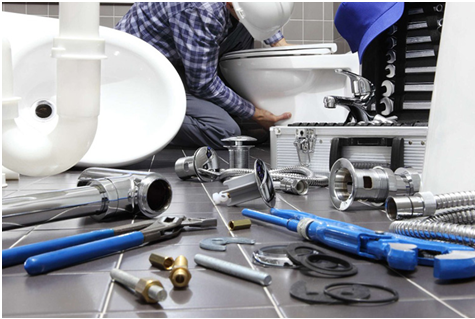
Plumbing and Sanitary Installation
Plumbing and sanitary installation play a crucial role in maintaining the comfort and functionality of our homes and buildings. Whether you’re planning a new construction project, renovating an existing space, or simply need to fix a leaky faucet, understanding the basics of plumbing and sanitary systems is essential. In this blog, we’ll take you through the key aspects of plumbing and sanitary installation, from the fundamentals to some advanced tips.
Bonafide Technical Services L.L.C is engaged in every phase of a project from concept to completion, enabling the creation of environments that facilitate the desires of clients.
Architecture
Building
Construction
Interior Design
Understanding Plumbing and Sanitary Systems
Tools and Materials For Plumbing and Sanitary works design
Tools and materials are essential for plumbing and sanitary work. They help the plumber to perform various tasks such as cutting, bending, joining, sealing, and repairing pipes and fittings. Some of the common tools and materials used in plumbing and sanitary work are:
Pipe Cutter: A tool used to cut pipes of different materials and sizes. There are different types of pipe cutters, such as solid type, hook type, and chain type.
Hacksaw: A tool used to cut metal pipes, nuts, bolts, screws, and other objects. It has a blade with fine teeth that can cut through hard materials.
Hole Saw: A tool used to cut circular holes in pipes, walls, floors, and other surfaces. It has a cylindrical blade with teeth that can drill through various materials.
Pipe Blender: A tool used to bend pipes into different shapes and angles. It can be manual or hydraulic. It has a curved form that can fit around the pipe and apply pressure to bend it.
Wrenchers: Tools used to tighten or loosen nuts, bolts, fittings, valves, and other objects. There are different types of wrenches, such as adjustable wrench, pipe wrench, basin wrench, faucet key, torque wrench, etc.
Pilers: Tools used to grip, twist, cut, or bend wires, pipes, nuts, bolts, and other objects. They have two handles and two jaws that can be opened or closed by applying pressure.
Plumber’s Torch: A tool used to heat pipes and fittings for soldering or brazing. It has a flame that can melt metal and create a strong joint.
Thread sealing tape: A material used to seal the threads of pipes and fittings to prevent leaks. It is also known as plumber’s tape or Teflon tape. It is wrapped around the threads before screwing them together.


Pipes: Materials used to transport water or waste from one place to another. They can be made of metal, plastic, clay, concrete, or other materials. They have different sizes, shapes, and specifications depending on their use.
Fittings: Materials used to connect pipes or change their direction, size, or shape. They can be elbows, tees, reducers, couplings, unions, valves, traps, etc. They have different types and standards depending on their use.

